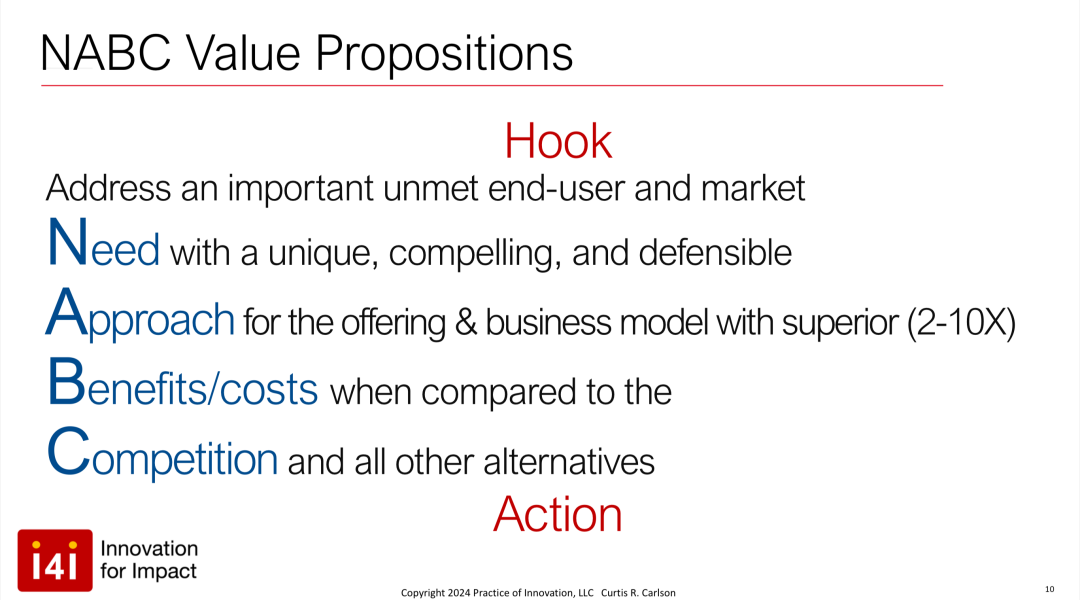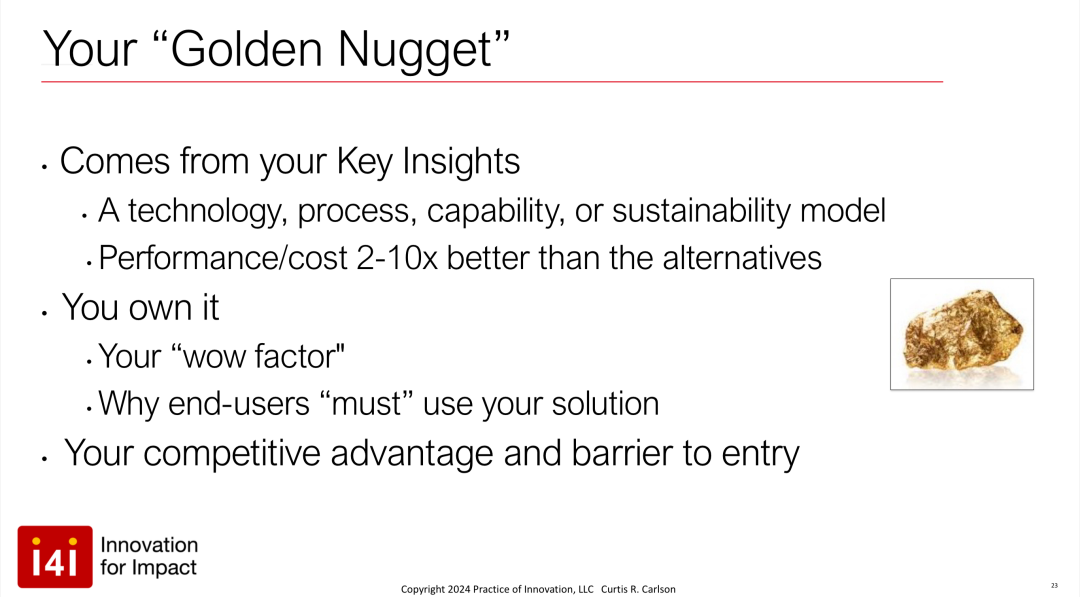On June 7th, the 5th AIR Master Dialogue event was successfully held at the AIR Wuxi Innovation Center (AIR+IC). We were honored to have Prof. Curtis Carlson, the former President and CEO of SRI International, Emmy Award Winner, and Member of the National Academy of Inventors, deliver a presentation titled "Innovation for Impact" and engage in discussions with students and faculty about innovation, problem identification, technology evolution, and organizational structure.

Professor Curtis Carlson, Ph.D., currently serves as a Distinguished Executive in Residence at Worcester Polytechnic Institute (WPI) and as a Professor of Practice at Northeastern University. He was the CEO of SRI International from 1998 to 2014, where he presided over groundbreaking innovations such as Siri and HDTV. Under his leadership, SRI's revenue more than tripled. Professor Carlson specializes in value creation and innovation, focusing on transforming organizations and developing methodologies to enhance innovation processes.
Professor Carlson emphasizes that society faces significant unmet needs in various areas, including climate and energy, poverty, health, and education. He points ou
t that performance across different sectors remains suboptimal, with companies achieving less than 25% efficiency and universities ranging from 0-15% in technology transfer. He argues that improving value creation methods is essential to address these unmet needs effectively. Carlson highlights the potential of Artificial Intelligence (AI) to revolutionize value creation, amplifying its impact by more than ten times.
The NABC framework stands for Need, Approach, Benefits/Costs, and Competition. This structured method is designed to create compelling value propositions:

-
Need: Identifying a significant and growing market gap that requires addressing.
-
Approach: Developing a unique, compelling, and defensible solution and business model.
-
Benefits/Costs: Ensuring the offering provides superior value compared to alternatives, ideally 2-10 times better.
-
Competition: Clearly differentiating the offering from competitors.
Carlson stresses the importance of being specific, quantitative, and memorable in crafting value propositions. Using stories, images, sketches, trend graphs, mock-ups, and models can make the propositions more engaging and understandable. He also emphasizes that value propositions should be concise and avoid vague terms like "bigger," "better," "faster," or "cheaper."
Key Insight from Case Studies
iPhone
-
Situation: Increasing number of applications on mobile devices.
-
Problem: Input with tiny keys is slow and inconvenient.
-
Solution: Reconfigurable display and full operating system with multi-touch technology, eliminating the need for a stylus.
Space-X
Situation: Rapidly increasing space opportunities.
Problem: High cost limits opportunities.
Solution: Significant cost reduction through reusable rockets, leveraging old technology, improved manufacturing, and a total systems approach.
Carlson introduces the concept of the "Golden Nugget," a key insight that provides a significant performance or cost advantage, creating a "wow factor" that compels end-users to adopt the solution.

AI has the potential to significantly enhance value creation by enabling faster learning and iteration. Carlson discusses the concept of AI-Tutors, which use scripts to guide the value creation process, benchmark performance, and generate new insights. These AI-Tutors can ask critical questions such as how to improve a solution further and what additional information investors might need. The goal is to facilitate rapid iteration and continuous improvement, ensuring that innovations are aligned with market needs and stakeholder expectations.

In conclusion, Professor Carlson advocates for a systematic approach to value creation, emphasizing the importance of addressing unmet societal needs through structured methodologies like the NABC framework. He underscores the role of active learning, collaboration, and AI in driving innovation. By following these principles, organizations can significantly improve their performance and create impactful solutions that address critical challenges in society. The lecture encourages participants to think critically about their innovation processes and adopt proven practices to enhance their value creation efforts.
The Q&A session was moderated by Dr. Yilun Chen, executive director of AIR Wuxi Innovation Center, joined by Dean Ya-Qin Zhang, prpvided some deep insights into innovation, problem identification, technology evolution, and organizational structure. This article summarizes the key takeaways from the Q&A session.

1. Identifying and Defining Problems
Q: Getting to the real problem and identifying the needs is very difficult and costly. What’s the best way to identify and define the problem?
Curtis Carlson (CC): Identifying the real problem is challenging and expensive. The first step is to identify the end-user(s) and engage with them through interviews, experiments, and demonstrations. End-users will not reveal the problem unless you work closely with them.
Focus on fundamental needs that significantly impact people's lives, like convenience in the case of the iPhone. Conduct experiments to understand and address these needs.
Zhang Ya-Qin (YQZ): Sometimes, products are created to generate needs, as seen with the iPhone.
2. Reaching End-Users and Stakeholders
Q: How to reach the end-users?
CC: While satisfying end-users is crucial, other stakeholders like buyers or middlemen must also be considered. It’s essential to identify all stakeholders involved.
YQZ: Business models now often include both B2B and B2C elements, referred to as “platforms.”
3. Simplifying Complex Ideas
YQZ: Reflecting on his career at GTE and Sarnoff Research Center, Zhang emphasized the importance of simplifying complex ideas. Leaders should distill their thoughts into fundamental concepts, which helps drive impactful innovation. As groups grow, the explanation must become simpler. If you can’t explain your idea in 30 seconds, it’s not simple enough.
Innovation involves scaling up and addressing fundamental challenges. Misidentifying end-users can lead to product failure. Steve Jobs identified consumers as the primary end-users for the iPhone, focusing on their convenience.
CC: Simplification is key. Focus on fundamental issues, and engage in iterative discussions to clarify and refine your ideas. This can be achieved through practices like the "Pigeon Practice," where value propositions are repeatedly pitched and refined.
Summarize your idea on one piece of paper and refine it repeatedly.
4. Evolution of Technologies
Q: How do technologies evolve?
CC: Many technologies develop exponentially due to the convergence of various fields, including infrastructure technologies. Sharing and refining ideas within a collaborative environment is crucial.Successful innovation often involves demonstrating concepts through simple prototypes, as seen with the da Vinci system’s early mechanical arm demos.
YQZ: The maturity of technology and customer readiness are critical. Innovations like HDTV only materialized with advancements in digital and transmission technologies. The da Vinci Robotic Surgical System’s success story exemplifies the importance of simple, effective demonstrations and securing investment for further development.
5. Frameworks and Organizational Structures
Q: Is the NABC framework perfect? How has it evolved in the last 30 years?
CC: No framework is perfect, but the NABC framework guides innovators in the right direction. It ensures that the focus starts with the customer, fostering a value-creation mindset throughout the organization. The framework has been repeatedly validated across various large organizations.
YQZ: The simplicity of the NABC framework helps teams align and agree on key priorities, avoiding unnecessary complexity.
6. Corporate Innovation Structure
Q: How should we organize the corporate innovation structure in an organization?
CC: The organizational structure should encourage the pursuit of the "Next Big Thing," with leadership overseeing this process. However, each organization must adapt its approach based on its unique culture and objectives.
YQZ: Different companies have different cultures. For example, Apple’s closed culture contrasts with the openness of Microsoft and Google. In the AI era, openness is crucial for fostering innovation.
7. Activating and Addressing Needs
Q: How to activate the needs of people?
YQZ: People have needs to save time and to kill time. Understanding these basic needs can drive innovation.
CC: Innovation can be driven by understanding chemical reactions in the brain, such as endorphins and dopamine.
Q: What are the benefits of science and technology for ordinary people?
YQZ: Science and technology serve as great equalizers, simplifying complex solutions and improving daily life.
CC: Technological advancements continually enhance the quality of life for ordinary people.
8. Advice for Young Scientists
Q: What’s the most important thing that young scientists at AIR should work on?
CC: Developing the skill to identify the needs of others is crucial for a long and successful career. Everyone should see themselves as value creators, focusing on meeting the needs of end-users.
The Q&A session with Professor Curtis Carlson and Professor Zhang Ya-Qin at Tsinghua University's Institute of AI Industrial Research provided valuable insights into the intricacies of innovation. Emphasizing the importance of identifying real problems, engaging end-users, simplifying ideas, and structuring organizations to foster innovation, the discussion highlighted practical strategies and frameworks like the NABC model. Young scientists and innovators are encouraged to adopt a value-creation mindset, continuously refining their approaches to meet the evolving needs of society.


